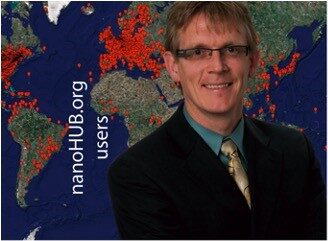Date: May 20th, 2025
Time: 11:00AM Eastern Daylight Time (Montreal)
Title: Technology Computer-Aided Design and Ab Initio Simulations of Quantum-Technology Hardware
Speaker: Félix Beaudoin, Ph.D. Director of Quantum Technology, Nanoacademic Technologies Inc.
Organizer: TC10 mentee member, Luiz Felipe Aguinsky
Register below to receive meeting link.
Abstract:
Quantum technologies are poised to revolutionize sensing, cryptography, and computing by leveraging the deepest quantum-mechanical effects such as quantum superposition and entanglement. However, quantum advantage relies upon quantum hardware such as superconducting qubits or spin qubits in semiconductors, which suffers from several defects and imperfections that may lead to decoherence. In addition, quantum-hardware design, prototyping, and characterization workflows that do not leverage mature and predictive technology computer-aided design (TCAD) simulation software often rely on excessive trial and error with real-world devices. This approach incurs high manufacturing and personnel cost and may even result in quantum devices that fail to
meet performance requirements. In this webinar, we describe how Nanoacademic Technologies’ ab initio (RESCU, NanoDCAL) and quantum TCAD (QTCAD®) software can be used for atomistic and TCAD modeling of quantum
devices, akin to simulation and design workflows employed for standard semiconductor devices and materials. We will show how recent functional and performance advances in the QTCAD® software led to the demonstration
of quantitatively predictive simulations of spin qubits in semiconductor gated quantum dots. In addition, we will describe how combining QTCAD® features with the large-scale density functional theory (DFT) software
RESCU enabled calculating the addition energy of a single-phosphorus-donor spin qubit in silicon completely from first
principles for a system containing more than 10,000 atoms. Finally, future applications of QTCAD®, RESCU, and NanoDCAL for superconducting-qubit device and materials modeling will be explored.
Bio:
Félix Beaudoin is the Director of Quantum Technology and a Research Scientist at Nanoacademic Technologies Inc., a scientific software company based in Montréal, Québec, Canada. He first obtained an M. Sc. in theoretical physics from Université de Sherbrooke in 2011 under the supervision of Prof. Alexandre Blais, followed by a Ph.D. in theoretical
physics from McGill University in 2016 with Prof. William A. Coish. In 2017-2018, Félix Beaudoin worked as a postdoctoral associate and university lecturer at Dartmouth College in the research group of Prof.
Lorenza Viola, in close collaboration with the Quantum Information and Integrated Nanosystems Group led by Prof. William D. Oliver (Massachusetts Institute of Technology). Félix Beaudoin’s research interests are focused on quantum-technology topics such as quantum noise, quantum control, quantum computing, quantum metrology, and modeling of spin qubits and superconducting qubits alike.
Félix Beaudoin joined Nanoacademic in 2019 as a Research Scientist and became the company’s Director of Quantum Technology in 2021. With a team of experts, he manages the development of Nanoacademic’s newest quantum modeling tool: QTCAD®.
Register for meeting link:


 Dr.
Dr.